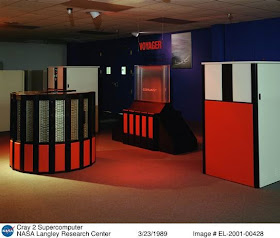Black Sabbath's 1983 LP "
Born Again" has to be the most unfairly maligned major artist LPs ever released.
Contemporary reviews panned the LP ("one of heavy metal's all-time greatest disappointments"). Few liked the production ("in a misguided attempt to record the heaviest album ever, [they] came away with the muddiest instead"), and nobody liked the
cover art, including the person that created it (
black-sabbath.com has a nice article with quotes from the artist explaining the cover's origin). The supporting tour was a comedy of errors (more on that later).
In late 1982, Black Sabbath was looking to replace its vocalist for the 3rd time in as many years.
Ronnie James Dio had joined the band in 1980, replacing the venerable
Ozzy Osbourne, but had left in 1982 in a bitter dispute with
Tony Iommi. The replacement was
Ian Gillan, who had been quite successful fronting
Deep Purple during their height of popularity. So you have a set of veterans trying to recapture the magic of 10+ years ago, especially in light of their style of music about to be supplanted by the emerging sub-genre of
thrash metal (remember: "
Kill 'Em All" also came out in 1983). Add to this mix a family feud (Ozzy &
Sharon Arden vs. Black Sabbath &
Don Arden (Sabbath's manager and Sharon's father)), and the result is simply a band trying really, really hard -- perhaps too hard -- to be the heaviest thing out there.
Here's where I stand: this is actually a pretty good LP. Not a great LP, mind you. But a good one nonetheless, even if it doesn't hold up to the classic Ozzy-led Sabbath LPs, or even the two Dio LPs. It is leagues ahead of the last two Ozzy Sabbath LPs (remember "
Technical Ecstasy" and "
Never Say Die"? I didn't think so).
- cover art: I agree with bassist Geezer Butler, who said of the cover: "It’s shit. but it’s fucking great!"
- production: Geezer's quote applies here too.
- Ian Gillan: I love Deep Purple, I love Black Sabbath, and I have no problems with Purple Sabbath (full disclosure: I also kinda liked Glenn Hughes on "Seventh Star", even though that barely qualified as Black Sabbath).
But I'm here to tell you that even if you have never heard of this LP, you should
celebrate its very existence for one reason:
It is the cornerstone of "This Is Spinal Tap".
Ok, sure, there are plenty of rock/metal cliches for Spinal Tap to mine, and maybe Spinal Tap would have existed without this LP, but it would not have been as funny. Here, in increasing order of priority, here are the contributions of "Born Again" to Spinal Tap:
Yes, the "Born Again" tour gave us Stonehenge. And not just Stonehenge mind you, but Stonehenge with a dwarf, because who doesn't look at the 20+ feet-high trilithons and think "you know what's missing? a dwarf." In real life, the Sabbath Stonehenge set was actually too big (because of a
feet vs. meters confusion) to fit in most venues instead of too small ("I think that the problem *may* have been, that there was a Stonehenge
monument on the stage that was in danger of being *crushed* by a
*dwarf*. Alright?"). Here's a short reflection from
Ian Gillan about Stonehenge (
transcript).
In summary, this is an enjoyable, but not classic, LP. And in retrospect, it was Sabbath's last commercially or critically significant studio LP.
Standout songs: "
Trashed" (there just aren't enough songs celebrating drunk driving...), "
Disturbing The Priest" (and even rarer: songs inspired about
interrupting choir practice), "
Zero The Hero", "
Digital Bitch" (and the rarest rock genre of all: songs trashing Ozzy's wife), "
Born Again" (Iommi's guitar sound on this is great), "
Keep It Warm" (well-suited for Gillan's style).
Skip' em songs: none.
Final score: 6/10. Stonehenge, people, it gave us Stonehenge: "Where the dew drops cry and the cats meow".
Bonus links #1: official videos -- caution: they're really awful and will make you enjoy the songs less: "
Trashed", "
Zero The Hero"
Bonus links #2: bootlegs of unmixed demos are floating around the web (
illogical contraption,
viva les bootlegs).
Bonus image: The magazine image that became the cover:
Bad Bonus link: The Guardian has an article that
points out problems with the timing of Black Sabbath influencing "This Is Spinal Tap": the band's tour and the movie both occurred in 1984. But that would mean that life imitated art, down to dwarfs and dimensionally inappropriate Stonehenges, and that is just too terrible to contemplate. I'm sticking with my more comforting ordering of events.
Update: Bad Bonus links #2: Turns out, the Stonehenge bit was in the original, 1982 20 minute demo version of the movie, entitled "
Spinal Tap: The Final Tour". Here is a
direct link to the scene, and here is the full demo (parts
1 and
2). Sabbath would not have known about the 20 minute demo film in 1983/84, so I guess this is like
Newton and Leibniz.



























